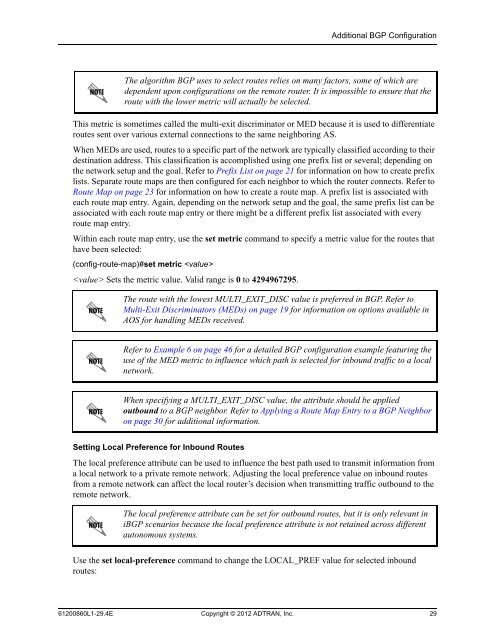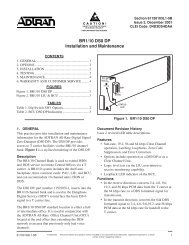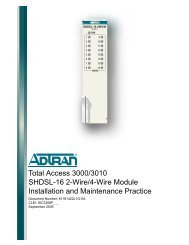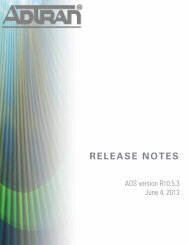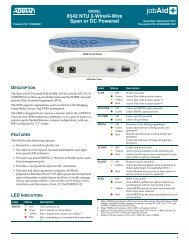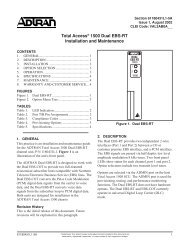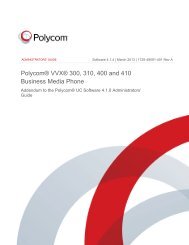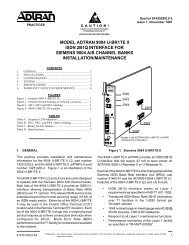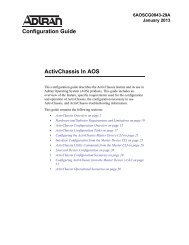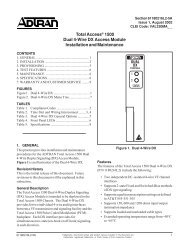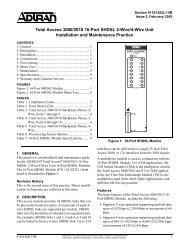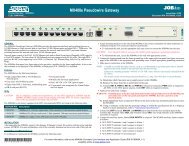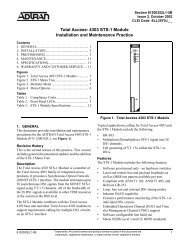View - ADTRAN Support Community
View - ADTRAN Support Community
View - ADTRAN Support Community
Create successful ePaper yourself
Turn your PDF publications into a flip-book with our unique Google optimized e-Paper software.
Additional BGP Configuration<br />
The algorithm BGP uses to select routes relies on many factors, some of which are<br />
dependent upon configurations on the remote router. It is impossible to ensure that the<br />
route with the lower metric will actually be selected.<br />
This metric is sometimes called the multi-exit discriminator or MED because it is used to differentiate<br />
routes sent over various external connections to the same neighboring AS.<br />
When MEDs are used, routes to a specific part of the network are typically classified according to their<br />
destination address. This classification is accomplished using one prefix list or several; depending on<br />
the network setup and the goal. Refer to Prefix List on page 21 for information on how to create prefix<br />
lists. Separate route maps are then configured for each neighbor to which the router connects. Refer to<br />
Route Map on page 23 for information on how to create a route map. A prefix list is associated with<br />
each route map entry. Again, depending on the network setup and the goal, the same prefix list can be<br />
associated with each route map entry or there might be a different prefix list associated with every<br />
route map entry.<br />
Within each route map entry, use the set metric command to specify a metric value for the routes that<br />
have been selected:<br />
(config-route-map)#set metric <br />
Sets the metric value. Valid range is 0 to 4294967295.<br />
The route with the lowest MULTI_EXIT_DISC value is preferred in BGP. Refer to<br />
Multi-Exit Discriminators (MEDs) on page 19 for information on options available in<br />
AOS for handling MEDs received.<br />
Refer to Example 6 on page 46 for a detailed BGP configuration example featuring the<br />
use of the MED metric to influence which path is selected for inbound traffic to a local<br />
network.<br />
When specifying a MULTI_EXIT_DISC value, the attribute should be applied<br />
outbound to a BGP neighbor. Refer to Applying a Route Map Entry to a BGP Neighbor<br />
on page 30 for additional information.<br />
Setting Local Preference for Inbound Routes<br />
The local preference attribute can be used to influence the best path used to transmit information from<br />
a local network to a private remote network. Adjusting the local preference value on inbound routes<br />
from a remote network can affect the local router’s decision when transmitting traffic outbound to the<br />
remote network.<br />
The local preference attribute can be set for outbound routes, but it is only relevant in<br />
iBGP scenarios because the local preference attribute is not retained across different<br />
autonomous systems.<br />
Use the set local-preference command to change the LOCAL_PREF value for selected inbound<br />
routes:<br />
61200860L1-29.4E Copyright © 2012 <strong>ADTRAN</strong>, Inc. 29


